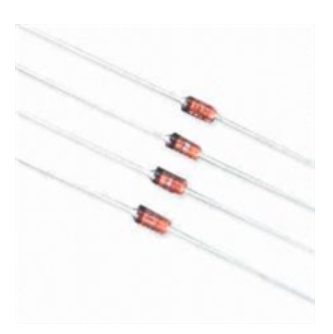Date:2025-07-15 Categories:Product knowledge Hits:310 From:Guangdong Youfeng Microelectronics Co., Ltd
2. Structure
The basic structure of voltage regulator diodes and ordinary rectifier diodes is composed of P-type and N-type semiconductor materials. However, the internal structure of the voltage regulator diode is relatively complex, and its chip is composed of multiple PN junctions, metal connection lines, and other materials. The structure of ordinary rectifier diodes is relatively simple, usually with only one PN junction and two pins.
3. Job characteristics
The main characteristics of a voltage regulator diodes are its fixed output voltage and high stability. Its output voltage can be adjusted within a certain range, usually at common voltage values such as 3.3V, 5V, 12V, etc. Zener diodes can automatically adjust the output voltage when the input voltage changes, maintaining stable operation of the circuit.
The main characteristic of ordinary rectifier diodes is their unidirectional conductivity, with a voltage drop of around 0.7V when conducting in the forward direction and a very high resistance when turning off in the reverse direction. Ordinary rectifier diodes are commonly used in circuits for rectifying power supplies, reverse protection, and other purposes.
4. Application
Zener diodes are commonly used in power circuits to provide stable voltage to the downstream circuit. The advantages of a voltage regulator diode are stable output voltage, high accuracy, and fast response speed. Zener diodes can be applied to various electronic devices, such as computers, televisions, mobile phones, power tools, etc.
Ordinary rectifier diodes are commonly used in power supply circuits, protection circuits, and other aspects. The advantages of ordinary rectifier diodes are simple structure, low price, and wide use. Ordinary rectifier diodes can be applied to various electronic devices, such as household appliances, automotive electronics, communication equipment, etc.
5. Choose
When choosing between a voltage regulator diodes and a regular rectifier diode, it is necessary to select the appropriate device according to the requirements of the actual application. If stable output voltage is required, a voltage regulator diode can be chosen; If you need to convert AC power to DC power, you can choose a regular rectifier diode.
Of course, when selecting devices, specific parameters such as maximum leakage current, forward conduction voltage, and reverse breakdown voltage need to be considered. Different devices have different parameter characteristics and need to be selected according to specific application requirements.
In short, voltage regulator diodes are an indispensable part of electronic technology and play an important role in various electronic devices. The solution to the fault of the voltage regulator diode mainly includes checking the pin contact, checking the load, and replacing the voltage regulator diode with a new one. When using a voltage regulator diode, attention should be paid to its working conditions to avoid being affected by excessive voltage or temperature, in order to ensure its normal operation. Although the appearance of a voltage regulator diode is similar to that of a regular rectifier diode, there are significant differences in their functions and working principles. In practical applications, suitable devices need to be selected according to specific requirements.

Previous: Classification, Structure, and Principle of MOSFET